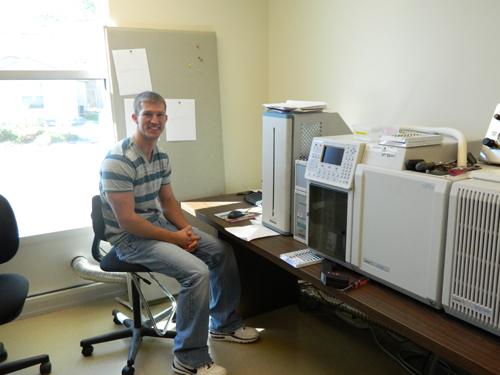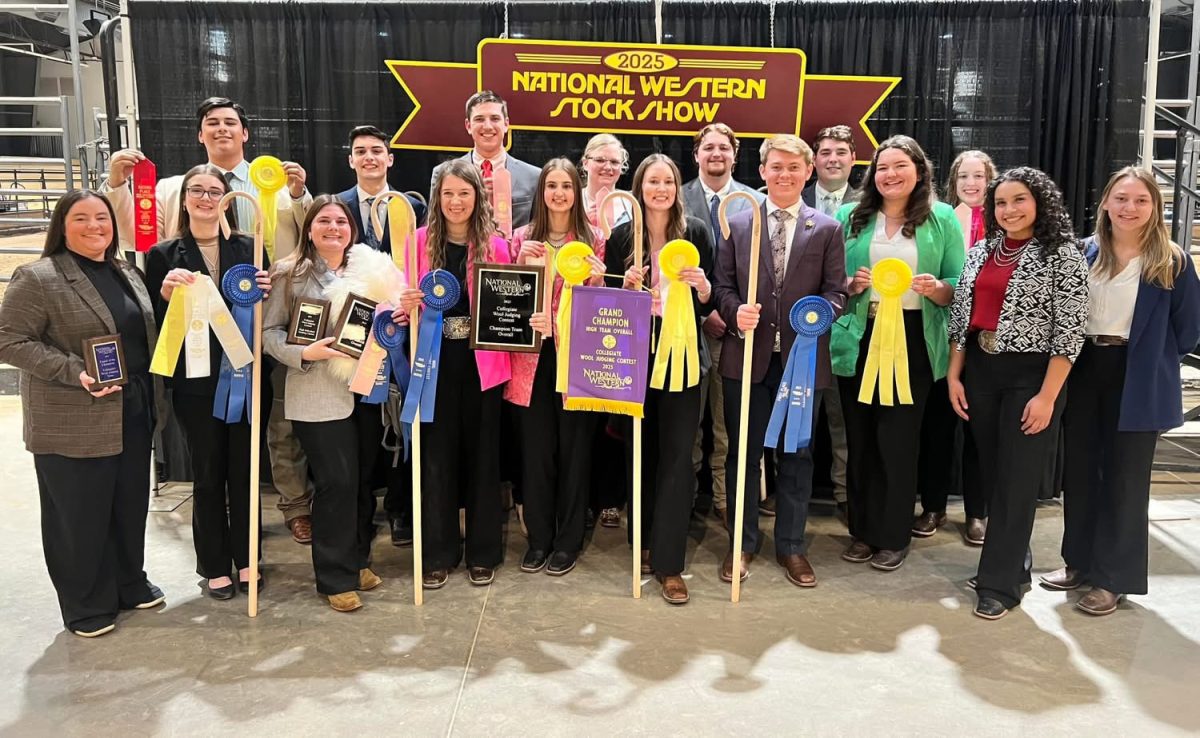
The Agriculture Air Quality facility is doing research on poultry, beef and swine farms to measure the air quality. This research has involved a USDA farm near Waco, where Dr. Eddie Caraway, research associate at WTAMU, and his research team are taking samples of the air to determine what impact the odor has on air and soil quality. The study of the sense of smell is called olfactometry. There are about six labs across the U.S.A that have tests on olfactometry.
“We are doing a three-year study,” Caraway said. “We laid down an area of chicken litter where we measured nutrients that was absorbed by the soil from the litter produced by the poultry farm.”
Caraway got his bachelor’s degree in biology in 2002. He transferred to agricultural air quality and started his research in 2005 at WT. He has been working with USDA and Texas A&M University at College Station doing odor research at the Waco farm.“The question that I ask myself is what could the odor impact be for the neighboring residents?” said Caraway. “Since the air has been very dry, there has been no run-off of matter. The more moisture in the air, the easier it is for odor to dilute and travel through the air.”
A device called a nasal ranger is used to measure the odor levels by holding the handheld device up to a nosepiece after selecting the dilution level that you want to test. Based on the selection made on the nasal ranger, a value is made on how small or intense the odor is.
“It measures the concentration of odor,” Dr. Marty Rhoades, assistant professor of Environmental Science and Agriculture, said. “There is the hedonic tone measurement that tells us, if you were to put it at both extremes, does it smell pleasant or does it smell very bad? This is completely determined by the person’s opinion. A good analogy of the way the nasal ranger works is if you take two cups of water that have the same amount of water, and slowly drop 7 Up in one cup. Once you can taste a difference in the two, this shows the diluted mixture of that 7 Up in the water.”
Rhoades has helped Caraway by working on beef and swine farms and measuring the quality of the air.
“We want to know where the smell is coming from, how much is coming from it, what causes the smells,” said Rhoades. “There is no health effect to people when it comes to these odors. They are more of a nuisance than harmful.”
“Odor is a mix of a lot of different compounds, somewhat like a stew,” said Caraway. “Everybody is different on their perception of how intense the odor of a substance is. Some towns that you drive through, such as Hereford, some will say that it stinks while others say it smells like money.”














